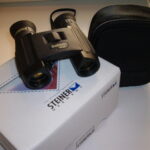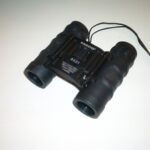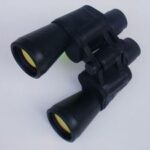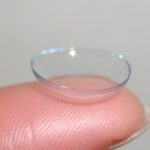Glasses and contact lenses do their work in the same way. Essentially, glasses, binoculars, and telescopes have a lot in common. They all work by stacking lenses at a specific distance from each other to refract or bend light to change how the image reflecting or generating the light is perceived. Glasses are designed to do two things with light in regard to your eyes. They will magnify the image in the same way as the telescope or microscope. Second, they will bend the light to change the point at which it strikes the retina of the eye.
In younger people, glasses most often will change the angle at which the light enters the eye.
The majority of young eyes do not need much in the way of magnification except in the case of a weak or lazy eye. Usually the problem is due to astigmatism. This happens when the lens or the eye itself is slightly irregular in shape. The shape of the eye or lens causes the light to miss the fovea and surrounding light receiving tissue at the rear of the eye where the optic nerve joins the eyeball. It is usually not a total miss or you would be blind. Instead, the eye is unable to make enough of an adjustment to compensate and items can appear as fuzzy, dim, double, or with other possible vision problems.
Glasses bend light to change the angle at which it enters the lens of the eye to correct this type of vision problem.
By adjusting how light waves strike the lens of the eye, the eye can be focused like a pair of binoculars. When you spin the adjustment on binoculars, you are moving the lenses to a new position in relation to each other and changing the angle of the light waves within the tubes of the binoculars. The objects do not get larger by much, but they become much more clear to see. The lenses in glasses are designed to sit at the proper distance from the eye by the way frames are made. Since the lens distance stays static, the lens itself must be ground to a specific shape to make the correction.
In some individuals and especially those past 40, the images need to be larger to be seen clearly.
As people age, the ability of the eye to focus the lens to sharpen the image begins to lessen. In order to see clearly, the images have to be made larger. Reading glasses are made to magnify things so the eye can see them better. The problem is that things close up need one type of magnification and things far away need another. The way that contact lenses and some glasses accomplish this is by making one eye corrected for near vision and the other for distance sight. Your brain is smart enough to be trained to perform this task automatically without you even realizing it is happening. Essentially, you read with one eye and see distant objects and people with the other.
If your eyes are too far apart in their ability to see, bifocals or trifocals may be needed.
For those with lazy eye and other similar problems, the weak eye cannot do its share of the load. The better eye has to do all of the work. This means that it needs two or more lenses available to see everything it needs to see clearly. This is accomplished for some with contacts and reading glasses. For others a good set of bifocals does the job quite well. Some without this eye problem will opt for the bifocal just to have better depth perception and other things that come from focusing with both eyes at the same time.






